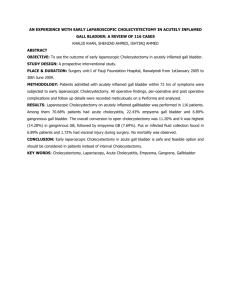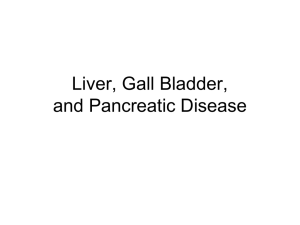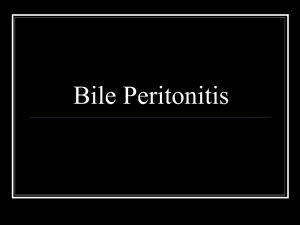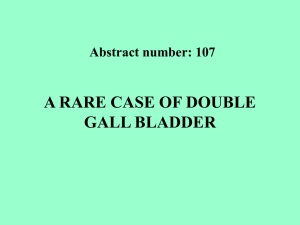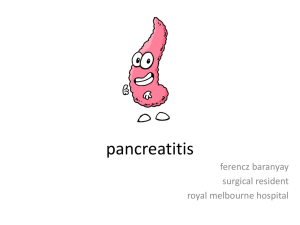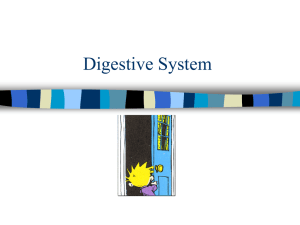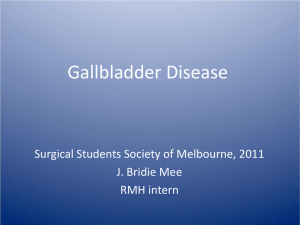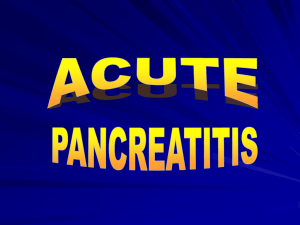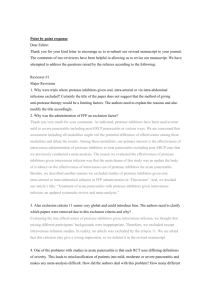Learning Guide for Gall Bladder and Pancreas
advertisement
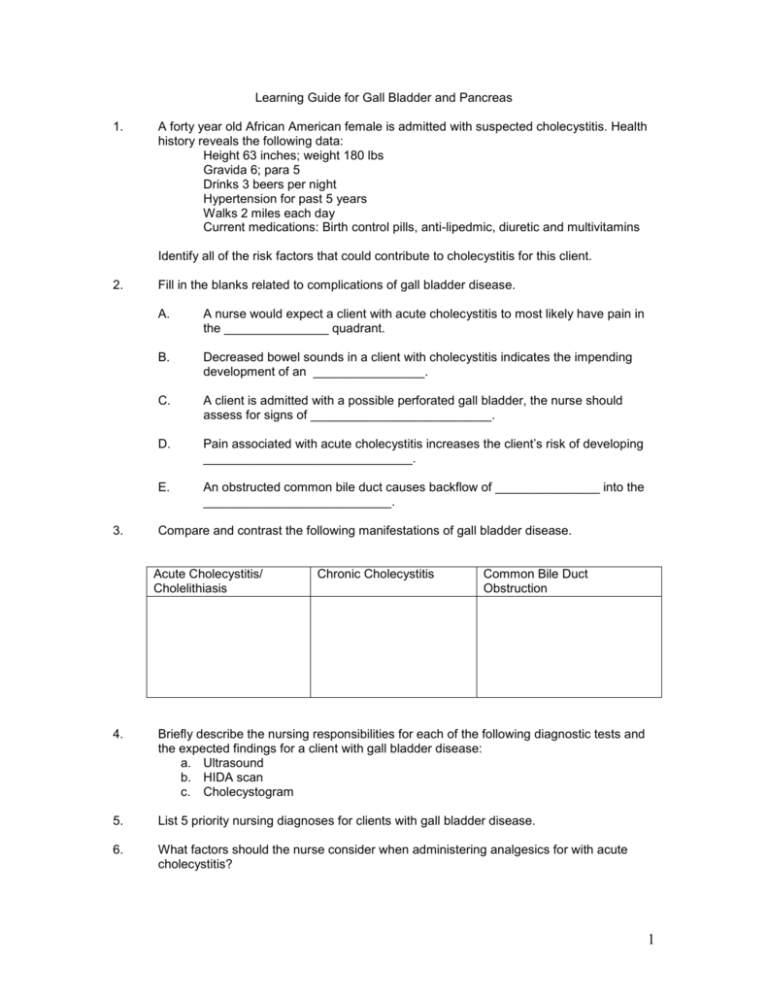
Learning Guide for Gall Bladder and Pancreas 1. A forty year old African American female is admitted with suspected cholecystitis. Health history reveals the following data: Height 63 inches; weight 180 lbs Gravida 6; para 5 Drinks 3 beers per night Hypertension for past 5 years Walks 2 miles each day Current medications: Birth control pills, anti-lipedmic, diuretic and multivitamins Identify all of the risk factors that could contribute to cholecystitis for this client. 2. 3. Fill in the blanks related to complications of gall bladder disease. A. A nurse would expect a client with acute cholecystitis to most likely have pain in the _______________ quadrant. B. Decreased bowel sounds in a client with cholecystitis indicates the impending development of an ________________. C. A client is admitted with a possible perforated gall bladder, the nurse should assess for signs of __________________________. D. Pain associated with acute cholecystitis increases the client’s risk of developing ______________________________. E. An obstructed common bile duct causes backflow of _______________ into the ___________________________. Compare and contrast the following manifestations of gall bladder disease. Acute Cholecystitis/ Cholelithiasis Chronic Cholecystitis Common Bile Duct Obstruction 4. Briefly describe the nursing responsibilities for each of the following diagnostic tests and the expected findings for a client with gall bladder disease: a. Ultrasound b. HIDA scan c. Cholecystogram 5. List 5 priority nursing diagnoses for clients with gall bladder disease. 6. What factors should the nurse consider when administering analgesics for with acute cholecystitis? 1 7. A client with cholelithiasis has an increase in serum amylase and lipase. What does this indicate? 8. Explain the purpose of a low fat diet for a client with gall bladder disease. 9. A client with gall bladder disease is at risk to develop a deficiency in vitamin __________. Explain why this might occur. 10. Describe the nursing responsibilities when caring for a client with a T tube. 11. Summarize the pathophysiologic changes that occur with pancreatitis. 12. Indicate if the following statements related to complications of pancreatitis are true or false. _______Vasodilation caused by pancreatic enzymes leads to hemorrhage. _______Insufficient trypsin causes impaired carbohydrate metabolism. _______Disruption of fat metabolism causes hypokalemia. _______Decreased plasma proteins contribute to the development of ascites. 13. How will symptoms vary for acute versus chronic pancreatitis? 14. Match each of the following manifestations of pancreatitis with the related cause. Some answers may be used more than once. ____ Nausea and vomiting A. Decreased calcium ____ Cullen’s sign B. Cell necrosis ____ Grey Turner’s spots C. Bleeding into tissue ____ Steatorrhea D. Impaired digestion ____ Atelectasis E. Decreased fat absorption ____ Chvostek's sign F. Decrease depth of respiration ____ Trousseau’s sign ____ Elevated amylase 15. Complete each of the following nursing diagnoses for a client with pancreatitis. Assessment Diagnosis Pain Implementation Fluid volume deficit Decreased airway clearance 2 Altered nutrition less than body requirements Risk for infection Risk for injury: hypocalcemia 16. Identify 3 medications that may be used in the treatment of pancreatitis and give the purpose of each one. 17. List 3 nursing interventions to prevent respiratory complications in a client with pancreatitis. 18. Explain how each of the following interventions will contribute to increase comfort for a client with pancreatitis: a. b. c. d. e. f. g. Semi-Fowler’s position Nasogastric suction Peritoneal tap TPN Low fat diet Elimination of caffeine and alcohol from diet Digestive enzymes 19. Develop a 24 hour meal plan for a low fat diet. 20. Evaluate the following data for a client with pancreatitis. Data Initial BP 112/76; 1 hour later BP 88/50 Evaluation/Modification Newly absent bowel sounds Client sleeping in fetal position Client found crying Chocolate candy bar found in room Dyspnea with respirations of 32/minute Frequent requests for pain med 3


